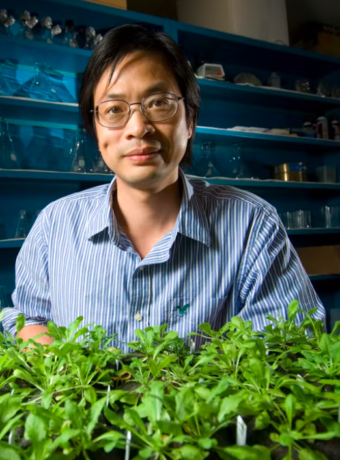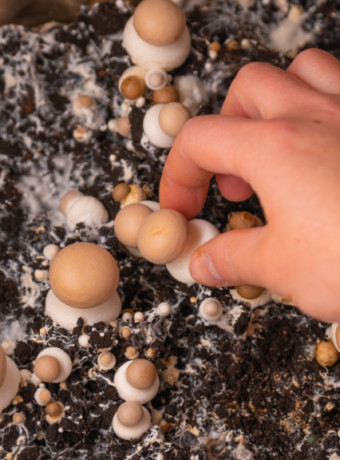This week’s ‘Global Food System Bite’ comes from an article titled Homogenized global food system puts people and planet at risk.
It’s hard to believe that just a handful of plants and animals make up the majority of the food we eat. However, it’s true that 75% of the world’s food comes from only 12 plants and five animal species. This fact is even more unbelievable when you consider that there are 14,000 edible and nutritious plant species in the world. So why do we rely so heavily on such a small number of food sources? The answer may have to do with availability and ease of cultivation. The crops that we rely on the most – wheat, rice, and corn – are all relatively easy to grow and produce high yields. In contrast, many other edible plants are much more difficult to cultivate or are only found in certain parts of the world.
The world’s current major sources of calories are rice, wheat and corn. These crops have supplanted previous regional preferences like cassava and sweet potato. These crops, alongside larger amounts of meat, dairy, and sugar products, are part of a global shift to a Westernized diet that favours energy-dense foods. Oil crops like soybean, sunflower and palm oil have all increased in yield amounts as well. The global shift to a Westernized diet has been accompanied by a decrease in the diversity of crops grown around the world. This trend is likely to have negative consequences for human health, as a lack of dietary diversity can lead to deficiencies in essential nutrients. In addition, the reliance on a few major crops makes global food security more vulnerable to agricultural pests and diseases. To ensure that people around the world have access to a nutritious and diverse diet, it is important to promote the cultivation of a wide range of crops.

Crop diversity is essential for the continued success of agriculture. Over the last hundred years, however, 90% of crop varieties have disappeared. This loss of diversity has been due to a number of factors, including the spread of Disease and the increased use of monoculture crops. As a result, there is now a heightened interest in preserving or restoring crop diversity. One way to do this is through the use of seed vaults, which store seeds from a variety of different plants in case they are needed in the future. Another approach is to go back to traditional farming methods, which often made use of a greater variety of crops. By increasing crop diversity, we can help to ensure the continued success of agriculture into the future.
Industrial farming is a major factor in the homogenization of global food. In order to meet the high demand for food, industrial farms have to produce higher yields of fewer staples. This is done by growing crops in more intensive ways, using more pesticides and herbicides, and depleting the soil of nutrients. As a result, the overall taste and quality of the food suffers. Additionally, this type of farming relies heavily on monoculture, which is the practice of growing a single crop over a large area. This makes farms more vulnerable to pests and diseases, as well as climatic changes. As a result, global food production is becoming more and more homogeneous. This is bad news for biodiversity and for our taste buds.
Modi Mwatsama, Head of Interventions for Climate and Health at Wellcome and a Registered Nutritionist, explains a key factor that sustains this unsustainable cycle: “agriculture subsidies are a major driver behind the food that is currently being produced for human and livestock consumption…” and “in most countries, these agriculture subsidies go to a small number of crops. These are mainly starchy staples such as wheat and maize, sugar crops such as sugar-beet and sugarcane, and oil crops such as palm oil and sunflower oil. Significant subsidies also go into rearing livestock, partly because that’s where the most money is to be made in the system.”

A global food system that relies on and produces only a few types of food is vulnerable to disruption by killer crop and animal diseases and pests. Climate change is creating conditions in which these pests and diseases are more likely to thrive. For example, higher temperatures and unpredictable weather patterns are ideal conditions for the spread of plant diseases. And as animals are forced into closer contact with one another due to changes in migration patterns, they are more likely to transmit diseases. This could have devastating consequences for the world’s food supply. In order to create a more resilient food system, we need to diversify our crops and livestock and invest in disease prevention and containment strategies.
The banana is a prime example of how industrial agriculture can lead to the depletion of biodiversity. For centuries, bananas were grown in a wide variety of climates and soils, in both small farms and large plantations. However, the rise of industrial agriculture led to the intensive selection of a single species of banana – the Gros Michel – for mass production. This process of selection favored traits that were valued by the industrial food system, such as a uniform appearance and a long shelf life. However, it also made the crop much more vulnerable to disease. In the 1950s, a soil fungus known as Panama disease nearly wiped out the Gros Michel banana. The Cavendish species was subsequently selected to replace it, but this too is now at risk of disappearing due to another spreading fungus. The decline of the banana illustrates the dangers of depending on a small number of crops for food production. When these crops are intensively selected for industrial purposes, they lose much of their genetic diversity, making them more susceptible to disease and pests. As a result, it is essential to protect the remaining biodiversity of our food crops.
How can we fix things?
One important first step in this process is to rethink food subsidies. At present, many countries subsidize the production of certain crops, such as corn and wheat. These subsidies often encourage farmers to overproduce, leading to environmental damage and excess food that is often unhealthy. By reassessing the way in which countries subsidize food, we can take an important step towards a more sustainable and healthy global food system.

Another key step is diversifying crops and moving away from an over-reliance on monocultures and monocropping. It also means moving away from unsustainable industrial farming practices that continue to drive climate change.
For instance, there are efforts to future-proof coffee with the rediscovery of a forgotten species called Coffea stenophylla, which was found to have better climate resilience compared to current species dominating global coffee consumption. Similarly, work is being done to develop chicken breeds that can better withstand high temperatures, as well as heat-tolerant cattle breeds that can continue to graze even in extreme conditions.
Such investments are essential if we are to build a more resilient food system that can withstand the challenges posed by a changing climate.
Finally, these changes can be difficult to implement without the right policies in place. Politicians need to be empowered to introduce these types of policies and push them forward. That can happen if there’s an awareness among the public of the two-way impacts of our current food systems on human health and climate change. When people are aware of the potential benefits of these policy changes, they’re more likely to support them. With public support, politicians will be more likely to take action on these important issues.



